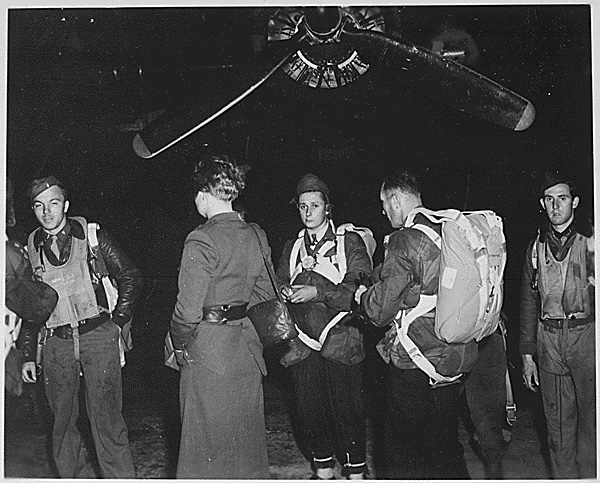At a time when the very function of government is being destroyed from within, an extraordinary historical documentary, “Drop Dead City,” puts the workings and responsibilities of government front and center, in a meticulous reconstruction of New York City’s fiscal crisis of the mid-nineteen-seventies. Tracing the causes of the crisis, its short-term effects, and the complexity of its resolution, the film brings to the fore the situation’s philosophical implications—the social ideals that put the city in a financial hole and the political forces that very nearly prevented rescue.
The documentary’s title comes from the most famous flash point in the crisis: in October, 1975, with the city facing imminent bankruptcy, President Gerald Ford gave a speech saying that he would veto any congressional bill attempting a financial bailout; the next day, the Daily News ran a headline that became instantly famous: “FORD TO CITY: DROP DEAD.” Its impact was powerful: Ford became a target of protests in New York, national polling on a bailout shifted from negative to positive, and, by the end of the year, Ford had signed a bill that provided $2.3 billion in federal loans. Even though Ford backed down, he’d become the villain in the city’s popular narrative, and the people remembered. When he narrowly lost the 1976 Presidential election, to Jimmy Carter, New York State provided the margin of victory in the Electoral College, and New York City provided the margin of victory in the state.
“Drop Dead City” is directed by Peter Yost and Michael Rohatyn. Yost is a veteran of historical documentaries, and his experience handling information is apparent; the film tells an enormously complex story of financial fine points and political maneuvering, along with the underlying social and personal backstories, with a deft touch and a brisk sense of wonder. It skillfully uses archival footage—partial and selective but resonant and persuasive—to convey the tone of the city at the time. Yost’s co-director, Rohatyn, has an interest in the subject that is more than historical: his father, Felix Rohatyn, was the investment banker who engineered the city’s financial rescue. (Felix died in 2019 but figures amply in archival footage.) Michael is best known as a composer of film scores—he scored this one and is heard playing keyboards and guitars—and “Drop Dead City” is clearly a personal one for him; he has spoken of shooting two hundred hours of footage. Although Michael had turned just twelve in 1975, the story is nonetheless part of his world, and the easygoing candor with which many key participants in the drama speak on camera is surely fostered by their affinity with him.
The story set out in “Drop Dead City” remains startling even half a century later. In 1974, New York’s new mayor, Abraham Beame, took office believing that the city was two billion dollars in debt. For the previous four years, he’d been the city’s comptroller, so he oughta know. However, his young successor in that office, Harrison Goldin, conducted an audit and discovered that the debt was actually about six billion dollars. The finances were in total disarray; at one point Goldin stumbled on a huge batch of cancelled checks stashed in a closet. The problem wasn’t that the city’s books were wrong but that “there were no fuckin’ books”—in the memorable words of Stephen Berger, who was later brought in to help straighten things out, as the head of the newly formed Emergency Financial Control Board. The story took an emperor’s-new-clothes turn: the city was meeting payroll by issuing round after round of short-term bonds, underwritten (i.e., purchased for resale) by banks. In early 1975, John Osnato, a young lawyer representing one of the banks involved, asked an assistant comptroller about expected tax receipts needed to back the bonds, and, unsatisfied by the answers, became convinced that they fell short of what was required. Instantly, banks refused to underwrite the bonds.
Beame slashed expenses, laying off city employees including teachers, police officers, firefighters, and sanitation workers. Protests and strikes resulted; garbage piled up in the streets, drawbridges were left raised, and the police and firefighters unions tried to scare tourists away from the city with propaganda about “Fear City.” (The former mayor David Dinkins calls the latter maneuver “disgraceful.”) Beame, a longtime clubhouse politician, twisted arms: when one union obligingly invested some of its pension fund in the municipal bonds, some of its members were rehired. He also turned to the government of the State of New York and its new governor, Hugh Carey, for help. Carey tapped Felix Rohatyn, a veteran Wall Street dealmaker, to establish the Municipal Assistance Corporation (mac). Rohatyn was tasked with gathering banks, unions, politicians, and officials to agree on a rescue plan.
The institutional creativity in the face of crisis comes off, in “Drop Dead City,” with a nearly aesthetic appeal—and offers a crucial reminder, if any were needed, that institutions embody ideals, just as the destruction of institutions is also a sort of intellectual destruction. The movie elides too many of the details, but mac was authorized to float new, state-backed bonds, whose purchasers—including many union pension funds—would be protected in the case of the city’s bankruptcy by a cordoning off of city tax revenues. In effect, mac (quickly nicknamed Big mac) was empowered to administer the city’s finances, leaving Beame a mere figurehead—“devoid of power, and he knew it,” Fred Ferretti, then the Times’ City Hall bureau chief, recalls.
Yet the city was still on the verge of failing to repay short-term bonds. By October, a declaration of bankruptcy was mere hours away, but the United Federation of Teachers and its president, Albert Shanker, were refusing to lend the city money by buying the bonds. Spoiler alert: just before the deadline, Shanker agreed to buy the bonds after all, for fear that teachers would be blamed for the bankruptcy, but it was in the wake of this nail-biting standoff that Ford made his fateful speech against a bailout. A crucial aspect of Ford’s ultimate capitulation, and of mac’s rescue strategy, was the recognition of the hidden interconnections of cities, states, and countries—a New York bankruptcy would have rattled the national and world economies. mac forced the city to take drastic cost-cutting measures, laying off more workers, closing some public hospitals, reducing a wide range of social services (from drug-abuse treatment to library hours), and—for the first time ever—charging tuition in the City University system. And federal bailout money, when it eventually came, was granted on condition of further painful austerities. The filmmakers conclude that, though the city was pulled back from the brink of catastrophe, it was also definitively changed for the worse.
The delight of “Drop Dead City” is that it’s a symphony of voices, past and present. The film’s interviews mesh, even rhyme, with archival clips documenting events as they unfolded, participants discussing their activities in the moment, and news reports that aired at the time. The sophisticated parsing of law and finance, the hard-nosed practicality of retail politics, and the workaday lilt of person-in-the-street interviews converge on the soundtrack and are reflected in images that are modestly but candidly communicative—uninflected but humming with passion. What’s most moving isn’t the fact that the film shows the disaster being averted but that it gives voice to a full-throated expression of the ideas and principles that got the city into trouble in the first place—the ideals of liberal government.
Those ideals are set up early on in “Drop Dead City,” with a variety of participants reflecting on New York in the sixties and early seventies. Betsy Gotbaum, who worked on education both for Beame and for his predecessor, John Lindsay, says, “There was a great deal of caring for people who had been left out and hadn’t been cared for.” The strength of the municipal unions, Berger says, meant that city workers could earn enough to become homeowners. Donna Shalala, a political-science professor who worked for mac, recalls that New York City’s public university system was tuition-free—the only American city where this was so. Lewis Goldfrank, a pioneer in emergency medicine, talks about how he was drawn to New York because he saw in its hospital system the chance to fulfill his vision of free universal health care.
The eminence whom the film casts as the prime mover of benevolent governance is Nelson Rockefeller, a liberal Republican (the breed wasn’t uncommon then) who was the state’s governor from 1959 to 1973. According to Carey’s administration, Rockefeller “spent a lot of money, liked to build things, liked to do things”—such as health care and public housing—but didn’t pay sufficient attention to where the funds were coming from. According to Berger, Rockefeller’s projects caused the city’s expenditures to more than triple from 1963 to 1973. Ferretti bluntly calls Rockefeller “the godfather of the fiscal nightmare.” If Rockefeller’s methods were imprudent, his principles were admirable—in contrast, for instance, with the attitude of William Simon, Ford’s Secretary of the Treasury, who publicly expressed the hope that the crisis would change “our attitudes as to the proper role of government in our society.” The portrait of Rockefeller as an out-of-touch plutocrat whose patrician impulse to help the common man takes no account of fiscal realities at least makes him sound more appealing than plutocrats (then and now) who are alert to fiscal realities but oblivious or indifferent to the needs of ordinary people.
Premium IPTV Experience with line4k
Experience the ultimate entertainment with our premium IPTV service. Watch your favorite channels, movies, and sports events in stunning 4K quality. Enjoy seamless streaming with zero buffering and access to over 10,000+ channels worldwide.

















